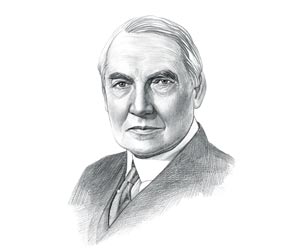|
|
|
|
|
The meeting was hailed as a great success and led to three major treaties - Four-Power Treaty, Five-Power Treaty and the Nine-Power Treaty.
1921 Washington Conference Facts: Fast Fact Sheet What was the Washington Conference of 1921? The 1921 Washington Conference was a military conference called by United States President Warren G. Harding that resulted in three major treaties: the Four-Power Treaty, Five-Power Treaty and the Nine-Power Treaty. What date was the 1921 Washington Conference? The start date was 12 November 1921 and the end date was 6 February 1922 What was the goal of the Washington Conference? The goal of the Washington Conference was to end a post-WW1 naval arms race and stabilize power relationships in the Pacific What were the accomplishments of the Washington Conference? The accomplishments of the Washington Conference were far reaching agreements on naval armaments to slow down the naval arms race. Facts about
Washington Conference Despite the terrible experiences and economic hardships caused by WW1 (28 July, 1914 - 11 November, 1918) the major powers in Europe were involved in a naval arms race. The United States of America intervened by arranging the Washington Conference. President Warren Harding called an international disarmament meeting inviting representatives from eight major countries of Great Britain, Italy, France, the Netherlands, Portugal, Belgium, China and Japan. The lengthy talks were held between 12 November 1921 and 6 February 1922 to discuss disarmament and slow down the arms race. The United States Secretary of State, Charles Evan Hughes (1962-1948) served as chairman of the Washington Conference. In his address to the delegates he proposed a ten year moratorium (pause) on the construction of large new warships. Charles Evan Hughes went on to propose a list of existing battleships in each of the attending countries that should be destroyed - starting with American warships. The delegates were highly motivated by the opening address and went on to discuss disarmaments and produced three agreements, or pacts, in an effort to slow down the arms race and reduce the risk of future wars - the Four-Power Treaty, the Five-Power Treaty and the Nine-Power Treaty. Four-Power Treaty: Summary of the Washington Conference Four-Power Naval Treaty:
Five-Power Naval Limitation Treaty: Summary of the Five-Power Naval Limitation Treaty:
Nine-Power Treaty: Summary of the Nine-Power Naval Treaty:
The major weakness of the Washington Conference was that it did nothing to limit land forces.
Japan was discontent because the Japanese were
required to maintain a smaller navy Despite the weaknesses, the Washington Conference was hailed as a great success and this led to a treaty to ban war and settling any and all disputes by peaceful means. The treaty was known as the Kellogg-Briand Pact. The Kellogg-Briand Pact, was ratified by 62 nations on August 27, 1928 |
| US American History |
| 1913-1928: WW1 & Prohibition |
|
|
|
|
|
First Published2016-04-19 | |||
|
Updated 2018-01-01 |
Publisher
Siteseen Limited
| ||
|
|

